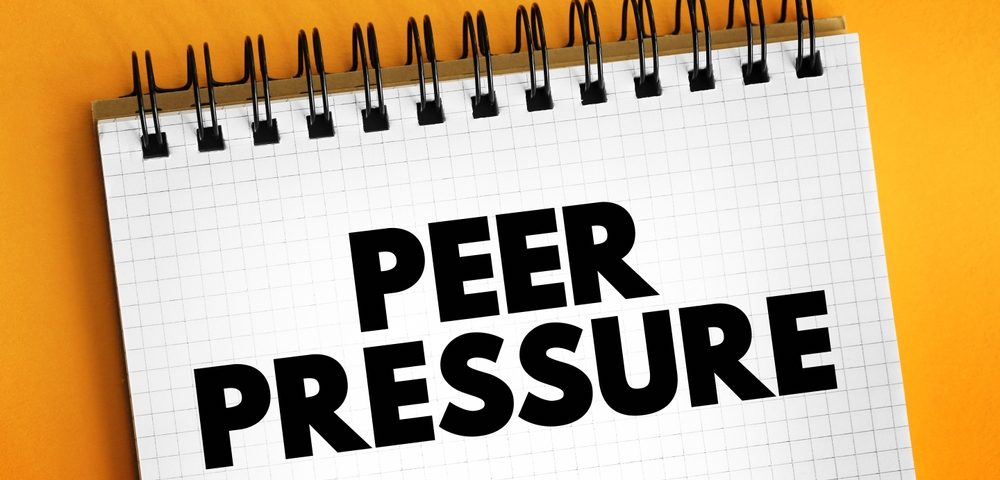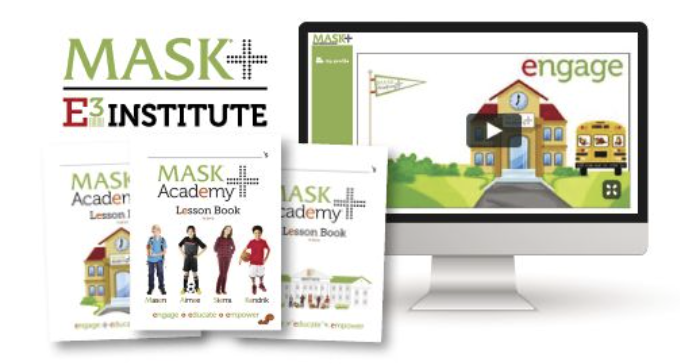
Modeling a Healthy Body Image
September 13, 2024
Journaling with Kids
September 18, 2024Helping children and teens develop effective exit strategies for handling peer pressure is essential for their ability to make healthy, independent decisions. Here are some practical strategies and tips for resisting peer pressure:
1. Prepare and Practice Saying No
- Use Simple Refusals: Teach your child that it’s okay to say “No, thanks” or “I’m not interested.” Simple, direct refusals can be effective.
- Practice Scenarios: Role-playing different situations can help your child feel more confident in saying no when the time comes. For example, practice how they might refuse an invitation to do something they’re uncomfortable with.
2. Blame an Authority Figure
- Use Parents or Teachers as Excuses: Encourage your child to say things like, “My parents would kill me if I did that,” or “My coach said I can’t do that if I want to stay on the team.”
- Safety First: Make sure your child knows that using you as an excuse is always acceptable, and reassure them that you’ll back them up.
3. Change the Subject or Suggest an Alternative
- Redirect the Conversation: Teach your child to change the topic or suggest doing something else, like, “Let’s go play basketball instead” or “How about we watch a movie?”
- Offer Positive Alternatives: Encourage your child to propose activities that are fun but safe, which can steer the group away from harmful behaviors.
4. Use Humor
- Defuse the Situation: Humor can be a powerful tool. Teach your child to use light-hearted jokes to deflect pressure, like, “I’d rather not get grounded for life, thanks!” or “Nah, I’m too boring for that.”
- Make It Fun: Using humor can help your child avoid confrontation and make saying no feel less awkward.
5. Stick to a Script
- Have a Go-To Response: Encourage your child to develop a standard response they’re comfortable using, such as “I’m good, I don’t do that” or “No thanks, I’m not into it.”
- Repetition Works: Teach them that repeating their script firmly can help shut down further pressure.
6. Use the Buddy System
- Have a Friend for Backup: Encourage your child to stick with friends who share their values and will support their decisions. It’s easier to resist peer pressure when they’re not alone.
- Make a Pact: Suggest that your child and a close friend agree to look out for each other and stand up for one another in tricky situations.
7. Create an Exit Plan
- Plan an Escape Route: Teach your child to have a plan for how to leave a situation if they’re feeling uncomfortable. This could be as simple as saying they need to leave or pretending they have somewhere else to be.
- Use a Code Word: Establish a code word that your child can text or say to you or a trusted adult if they need an excuse to leave a situation.
8. Avoid Risky Situations
- Stay Out of Trouble Zones: Encourage your child to avoid places or situations where they know they might face peer pressure, like unsupervised parties or hanging out with friends who engage in risky behaviors.
- Choose Friends Wisely: Help your child understand the importance of surrounding themselves with friends who respect their choices and won’t pressure them into doing something they don’t want to do.
9. Assert Confidence
- Be Firm: Teach your child to stand up straight, make eye contact, and use a firm voice when saying no. Confidence can deter others from pressuring them further.
- Self-Respect: Remind your child that respecting themselves and their values is more important than fitting in.
10. Use Technology
- Pretend to Get a Call or Text: If your child feels pressured, they can use their phone as a distraction, pretending they need to respond to a text or take a call as a way to remove themselves from the situation.
- Call for Help: Encourage your child to call or text you or a trusted adult if they need help getting out of a situation.
11. Know It’s Okay to Walk Away
- Remove Themselves from the Situation: Teach your child that it’s okay to simply walk away from a situation that makes them uncomfortable. They don’t owe anyone an explanation for protecting their well-being.
- Safety in Distance: Remind them that it’s better to leave than to stay in a situation that doesn’t feel right.
12. Reinforce Positive Decision-Making
- Praise and Support: When your child successfully navigates a peer pressure situation, praise them for their decision. Positive reinforcement helps build confidence in their ability to make good choices.
- Reflect and Learn: Encourage them to talk about their experiences and what they learned. This helps reinforce their skills for future situations.
Conclusion
By equipping your child with these exit strategies and supporting them in practicing them, you help them build the confidence and resilience needed to handle peer pressure effectively. The goal is to empower them to make choices that align with their values and keep them safe, both physically and emotionally.
To learn more tips and parenting subscribe to MASK The Magazine, parenting solutions for today’s families
Subscribe to MASK The Magazine
Or
Did you know that you can add past issues of MASK The Magazine and start your MASK Library –
Enroll your child or school in the MASK E3 Institute to equip them with the knowledge to make safe healthy and informed decisions.




